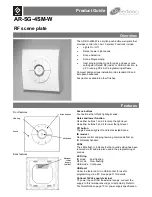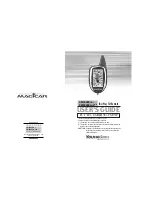
tams elektronik
!
HADES
t
a
ms elektronik
6. Checklist for troubleshooting and error correction
Warning:
If you notice a strong heat development, immediately disconnect the basic
module from the supply voltage.
Fire hazard!
Send in the basic module and all track
modules for testing.
6.1. Fault messages on the LEDs
Both LEDs on the basic module normally showing the status of occupancy for siding 2 light
simulaneously.
Possible cause: The track voltages has failed (e.g. due to a short circuit).
→ Switch the track voltage back on (after rectifying the short circuit). Operation restarts
automatically with the previous settings.
The two LEDs normally showing the status of occupancy on a basic or track module flash
alternatingly.
Possible cause: one or several carriages have been torn off during the train´s departure.
→ Check the related siding.
Possible cause: The departure time has been set too short.
→ Prolong the departure time.
After having eliminated the error, you have to restart HADES.
The LEDs on the basic module normally showing the set operation mode, display a
sequential light.
Possible cause: A track module could not be detected (no longer).
→ Check if all patch cables connecting basic and track modules are inserted properly.
→ Check if all track modules are working (e.g. by setting a locomotive on a siding and
checking the occupancy LED for the siding).
After having eliminated the error, you have to restart HADES.
6.2. Malfunctions in the sequence
After a train has arrived, the siding is not shown as "occupied" and/or the entry turnout has
not switched.
Possible cause: In analogue d.c. layouts the (in direction of travel) right rail has been cut
off instead of the left one.
→ Check the cuts.
An incoming train passes without stopping in the siding. A pushed train does not stop in
time.
Possible cause: Section A and / or section B of the siding have not been isolated electrically
from the rest of the layout.
→ Check the cuts.
Possible cause: The siding has not been connected properly.
→ Check the connections.
30 | Checklist for troubleshooting and error correction






































